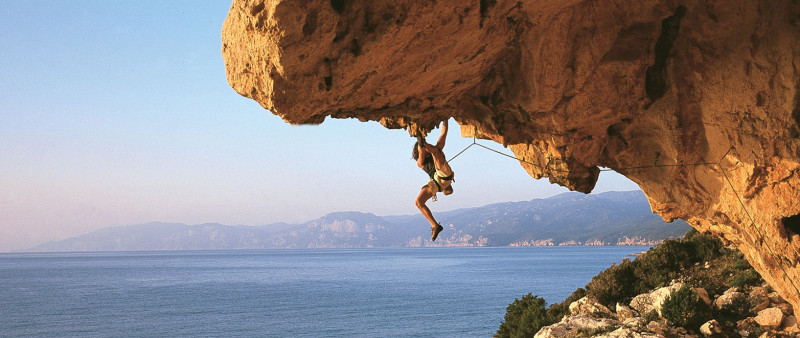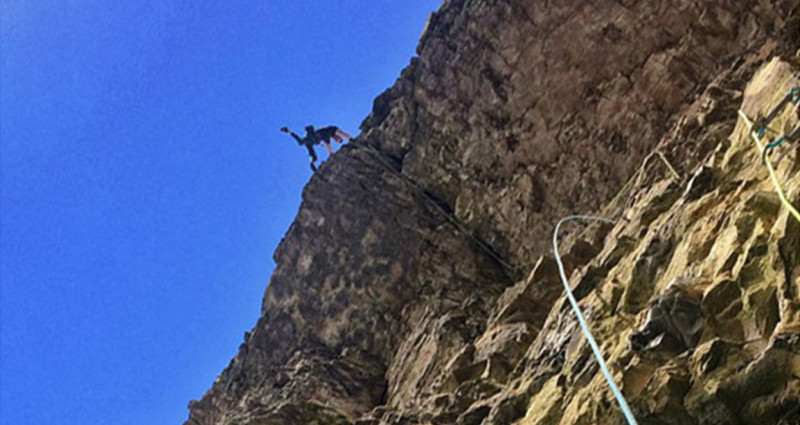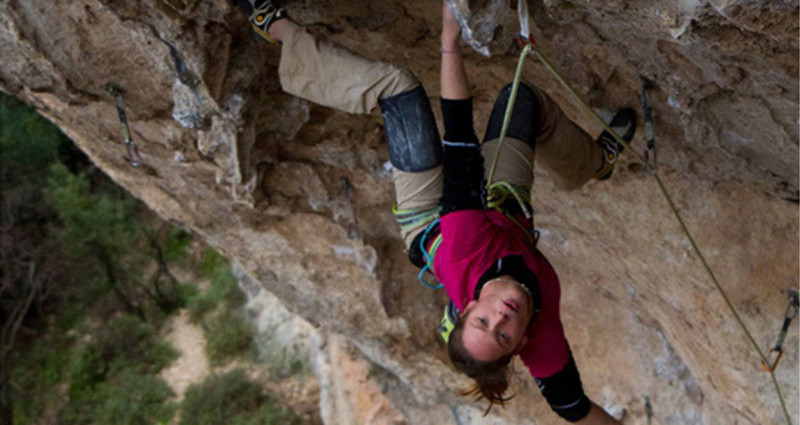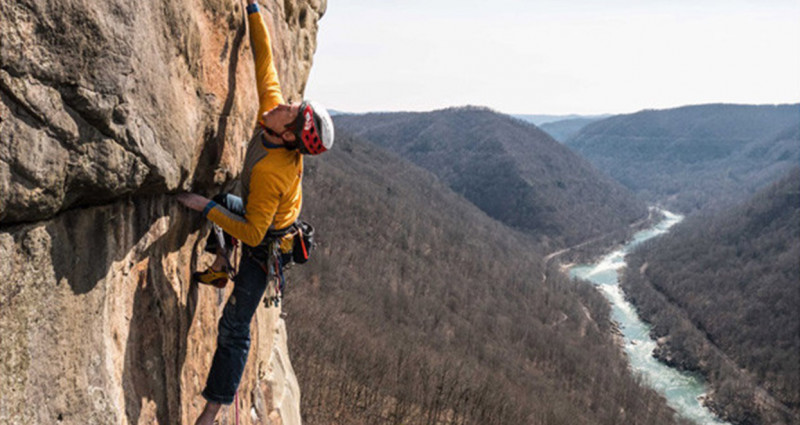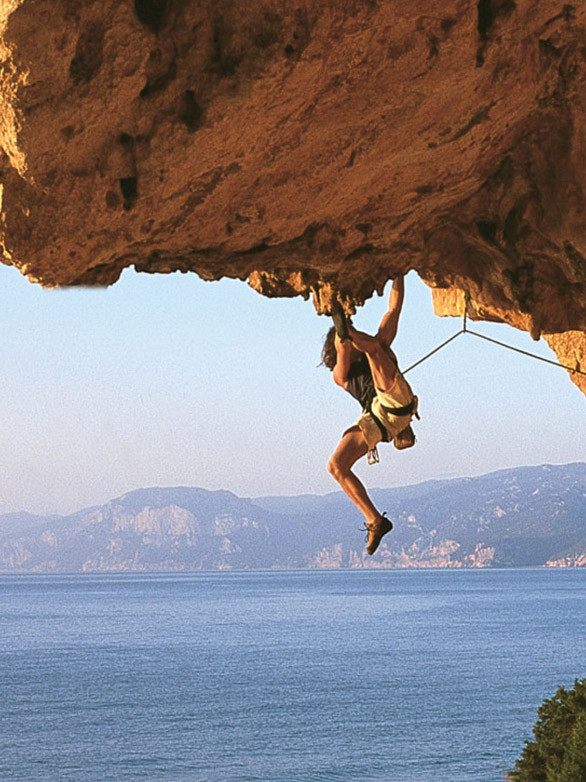Arrampicata Invernale - Diario Di Viaggio
Gli atleti e ambasciatori Wild Country condividono le loro mete invernali di arrampicata preferite.
Fa freddo: andiamo ad arrampicarci
Come scalatori dell'emisfero Nord, abbiamo usanze da reclusi. Con il sopraggiungere del freddo, la neve comincia a cadere e il buio dilaga, e noi iniziamo una specie di ciclo di letargo. Ci rifugiamo nelle grotte polverose di gesso delle palestre d'arrampicata, trascorriamo il tempo ossessionati dall'allenamento per i progetti al sole, o ci affolliamo davanti alle pareti rivolte a sud delle falesie locali. Poi, all'arrivo puntuale del sole, strisciamo fuori dalle palestre, indolenziti da laboriose sessioni di trazione, e partiamo pieni di energie verso il nuovo progetto dei nostri sogni. Anche se siamo a favore degli allenamenti, preferiremmo travalicare i mesi invernali con il viaggio verso una calda meta d'arrampicata.
Per aiutarci a scoprire alcuni ottimi punti d'arrampicata durante la stagione fredda, abbiamo chiesto al team Wild Country quali sono i posti in cui amano andare in inverno.
Blackers Hole, Dorest UK Tom Randall dice:
Blackers Hole è una sperduta scogliera sul mare della Gran Bretagna, ma assolutamente fantastica! Arroccata sugli impressionanti dirupi calcarei del Dorset, è composta da 5 falesie, tra cui l'alta Great Cave di 25 metri. Nei giorni giusti il tempo è insolitamente caldo; quando il basso sole invernale colpisce il retro della grotta, la riscalda come una mini serra. Con numerosi altri scalatori, mi sono arrampicato qui in shorts e maglietta persino a dicembre e gennaio!
La mia via preferita resta l'enorme fessura sul tetto del Forever Laughing, un impressionante multipitch 8a, che consiste di quasi tutti i movimenti e le caratteristiche concepibili. È piena di tiri di giavelle, arrampicate su scanalature, incastri di fessure, appigli a pipistrello e grosse prese in tutti posti giusti.
Stile di arrampicata: Sportiva e trad, soprattutto vie ripide
Scala di difficoltà: da E1 a E8 e da 5b a 8c
Tipo di roccia: Grotte marine calcaree
Qualità della roccia: Variabile ed eccitante (una preferita di Tom Randall)
Perché ti piace: Fa molto più caldo rispetto a tanti altri punti d'arrampicata in Gran Bretagna Attrezzi indispensabili: 25+ rinvii, casco, costumi da bagno, scarpe extra
Mesi in cui visitare: Dicembre – febbraio
Dritta insider: Porta un secondo paio di scarpe per l'approccio e preparati a un approccio emozionante. Per accedere alle grotte, dovrai schivare alcune onde e usare una via ferrata dall'aspetto approssimativo. Nel corso degli anni, ho visto molte persone bagnarsi i piedi sull'approccio... in posti diversi. Suggerimenti kit Blacker's Hole
Suggerimenti kit Blacker's Hole
Antalya, Turkey Caroline Ciavaldini Says:
For James and I Antalya will always be a special spot, it is actually where we first met and where we went been back to on our honeymoon. Aside from our personal connection, it is a perfect spot for winter climbing; there is a reason it has become a go-to winter climbing spot.
The rock is a very good quality limestone; steep, and covered in tufas. It is made up of beautiful reds, yellow, and blacks and the routes follow incredible features, which is a rarity for limestone sport climbs. Plus, it offers hundreds of routes to choose from with crags in the sun, and ones in the shade. All of this is largely thanks to the work of Tobais and his friends; the group who discovered the area, established the JoSiTo campsite, and bolted many of the routes. Their hard work has developed developed this into a climbing area that is accessible for all levels of climbers.
The campsite of JoSiTo requires a mention in itself, as it is almost as important as the climbing. Still run by Tobais and his friends it is the hub of the region and a great place to go where you can really just turn off your brain and enjoy the time. Just remember, book in advance in the high season as it fills up fast!
General Information
Style of climbing: Sport, steep and overhanging
Grade range: 4 to 8c+
Type of rock: Limestone
Rock quality: Great; lots of overhanging tufas
Why a favorite: Sun drenched rock, easy camping and accommodation, great food, and easy to find climbing partners.
Must bring gear: 20 quickdraws, 80-meter rope
Months to visit: November – February
Insider's tip: It's Simple stay at the JoSiTo campground and go climbing. You don’t need a car, you practically don’t have to know anything about anything beforehand. The campground has everything you could possibly want or need.
Antalya Kit Suggestion
Terradets, Spain
Paret de les Bruixes Sector
Pete Whittaker Says:
In Terradets there is climbing for everyone in a wide range of grades but my favorite spot is at the ‘Paret de les Bruixes’ sector. It’s a great spot because first of all, it’s Spain so you can actually get some winter sun, which is nice for a pasty Brit like myself. Second of all, it’s a fantastic location to get your pump on; steep, continuous climbing, on a variety of different features, with lots to go around at the 7c to 8b grade.
I’ve always visited here for purely onsighting trips and it’s perfect for this. Throw your rope down at the bottom of a climb, try it; do it or fail and come down, take 3 steps to your right to the next line of bolts and go again. By the end of the day you’re beasted and by the end of the trip you can’t feel your forearms anymore. I even recall a trip here with my sister, Neil Mawson, and Hazel Findley shortly after I completed the Century Crack, I was in the best offwidth shape of my life but my forearms were like spongy cabbage. At the end of the trip we were collecting draws left on various climbs and I was so pumped I could barely get up anything to retrieve the draws. That’s surely the sign of a successful trip!
General Information
Style of climbing: Sport, steep and overhanging
Grade range: 6b to 9a
Type of rock: Limestone
Rock Quality: Typically good; lots of pockets, tufas, and jugs in overhangs
Why a favorite: The south facing walls get the sun all day so it’s warm
Must bring gear: 70 or 80-meter rope (the routes are long)
Months to visit: December – February
Insider's tip: Buy the Lleida guidebook, fly into Barcelnoa, rent a car (it’s inexpensive), stay in Tremp - it’s the easiest climbing trip you’ll ever do!
Terradets Kit Suggestion
Gola del New River, USA
James Pearson dice:
La Gola del New River in West Virginia è, secondo me, uno dei segreti più gelosamente custoditi dell'alpinismo negli USA. C'è di tutto: dal bouldering alla trad su roccia stupenda, pochi visitatori e migliaia di vie; insomma, la Gola del New River ha qualcosa per tutti. Anche se il tempo rende difficile trovare il periodo perfetto per una visita, l'inverno è quello migliore. Ho avuto 2 settimane di sole e cielo blu in un'escursione, e quasi 2 settimane di neve e pioggia in un'altra. È una scommessa, ma ne vale davvero la pena!
Come meta internazionale, è un posto non proprio facile da raggiungere, ma vale lo sforzo. Puoi arrivare in aereo a Beckley, West Virginia, e poi fare un breve tratto in auto, oppure scegliere uno dei grandi aeroporti, con un tratto in auto più lungo. Come sistemazione suggerisco un AirBnB. Per mangiare trovi diversi ristoranti in città; il mio preferito è la Secret Sandwich Society, ma non puoi mangiare hamburger ogni sera, perciò, per variare la dieta, c'è Pies and Pints per Pizza e birra artigianale! Ma sei venuto qui per la roccia, un'arenaria molto compatta rossa e grigio-brunastra, che tende a formare difficili sezioni di blocchi divisi in buone spaccature orizzontali. È adatta per uno scalatore alto con dita forti: benissimo per me, un po' meno per Caroline. Tuttavia, la natura della roccia rende l'arrampicata a vista particolarmente problematica; è molto comune prendersi una sculacciata la prima volta su una via, e poi farla tranquillamente al secondo tentativo. Fa tutto parte di uno stile unico di arrampicata, comunque, e la qualità della roccia e delle vie garantisce a chiunque un gran divertimento.
Informazioni generali
Stile di arrampicata: Trad, sportiva, bouldering; verticale, increspata
Scala di difficoltà: da 3 a 9a
Tipo di roccia: Arenaria
Qualità della roccia: Eccellente; estremamente compatta
Perché ti piace: Non è tanto una meta per il sole d'inverno, quanto una troppo bella per lasciarsela scappare, sebbene troppo calda d'estate! C'è roccia stupenda per chilometri, in tutti gli stili che vuoi.
Attrezzi indispensabili: Un doppio rack di attrezzi per trad è più che sufficiente, ma uno singolo andrà bene per molte vie. Un set di rinvii è essenziale e anche di cuscinetti per i blocchi!
Mesi in cui visitare: Novembre – Marzo
Dritta insider: Vai alla Secret Sandwich Society per alcuni dei migliori hamburger del posto.
Gola del New River, USA
James Pearson dice:
La Gola del New River in West Virginia è, secondo me, uno dei segreti più gelosamente custoditi dell'alpinismo negli USA. C'è di tutto: dal bouldering alla trad su roccia stupenda, pochi visitatori e migliaia di vie; insomma, la Gola del New River ha qualcosa per tutti. Anche se il tempo rende difficile trovare il periodo perfetto per una visita, l'inverno è quello migliore. Ho avuto 2 settimane di sole e cielo blu in un'escursione, e quasi 2 settimane di neve e pioggia in un'altra. È una scommessa, ma ne vale davvero la pena!
Come meta internazionale, è un posto non proprio facile da raggiungere, ma vale lo sforzo. Puoi arrivare in aereo a Beckley, West Virginia, e poi fare un breve tratto in auto, oppure scegliere uno dei grandi aeroporti, con un tratto in auto più lungo. Come sistemazione suggerisco un AirBnB. Per mangiare trovi diversi ristoranti in città; il mio preferito è la Secret Sandwich Society, ma non puoi mangiare hamburger ogni sera, perciò, per variare la dieta, c'è Pies and Pints per Pizza e birra artigianale! Ma sei venuto qui per la roccia, un'arenaria molto compatta rossa e grigio-brunastra, che tende a formare difficili sezioni di blocchi divisi in buone spaccature orizzontali. È adatta per uno scalatore alto con dita forti: benissimo per me, un po' meno per Caroline. Tuttavia, la natura della roccia rende l'arrampicata a vista particolarmente problematica; è molto comune prendersi una sculacciata la prima volta su una via, e poi farla tranquillamente al secondo tentativo. Fa tutto parte di uno stile unico di arrampicata, comunque, e la qualità della roccia e delle vie garantisce a chiunque un gran divertimento.
Informazioni generali
Stile di arrampicata: Trad, sportiva, bouldering; verticale, increspata
Scala di difficoltà: da 3 a 9a
Tipo di roccia: Arenaria
Qualità della roccia: Eccellente; estremamente compatta
Perché ti piace: Non è tanto una meta per il sole d'inverno, quanto una troppo bella per lasciarsela scappare, sebbene troppo calda d'estate! C'è roccia stupenda per chilometri, in tutti gli stili che vuoi.
Attrezzi indispensabili: Un doppio rack di attrezzi per trad è più che sufficiente, ma uno singolo andrà bene per molte vie. Un set di rinvii è essenziale e anche di cuscinetti per i blocchi!
Mesi in cui visitare: Novembre – Marzo
Dritta insider: Vai alla Secret Sandwich Society per alcuni dei migliori hamburger del posto.
Suggerimento kit Gola del New River
Cresciano, Svizzera
Sven Durrer dice:
Cresciano è un luogo storico per il bouldering. In passato era un posto segreto, ma da quando Frédéric Nicole ha scalato Dreamtime, il primo problema 8c di boulder, è diventato noto agli appassionati di tutto il mondo. Con una gamma di problemi di boulder di vari gradi, è all'altezza del suo prestigio, persino l'asperità del granito solido. Come posto invernale è quasi perfetto: situato nel Canton Ticino, a sud delle Alpi, gode di un clima temperato con tanto sole durante l'inverno.
Anche se l'approccio può costituire un inizio di mattinata accidentato, in quanto dovrai camminare fino alla cima di un ripiano per 20 - 30 minuti, consente al corpo di riscaldarsi anche nell'aria invernale più fredda. Poi, con solo alcuni brevi warm up specifici, sarai pronto per il bouldering. Nell'area ci sono tanti dei miei problemi preferiti, ma se dovessi consigliarne un paio, il primo sarebbe Un uomo un perché, 6a, un problema super classico non tanto facile. Il secondo sarebbe Street Parade, una traversata in falsopiano 7a tecnica, divertente per esercitarsi su una propria sequenza, in quanto i dettagli più piccoli fanno davvero la differenza in questo problema.
Anche se di solito mi accampo, è importante ricordare che, in inverno, non ci sono campeggi vicino a Cresciano; i dintorni sono terre private e i terreni per il campeggio restano chiusi fino all'estate. Per fortuna l'Ostello offre un'ottima alternativa. È una sistemazione accogliente all'inizio della strada, che rappresenta un lusso nelle escursioni di bouldering. Dall'ostello comincio con un'ottima colazione, mi arrampico sui blocchi tutto il giorno, poi, quando sono completamente esausto, torno per una bella doccia calda. Dopo consiglio una buona pizza in paese, o nei pressi a Bellinzona, così potrai ricaricarti per l'indomani.
Informazioni generali
Stile di arrampicata: Bouldering: pareti verticali, strapiombi, placche
Scala di difficoltà: da 3 a 8c
Tipo di roccia: Gneis
Qualità della roccia: Eccellente; ad alta frizione ma grezza
Perché ti piace: Caldo sole invernale, infiniti problemi di bouldering, roccia solida e accesso/sistemazione facile.
Attrezzi indispensabili: Oltre al classico kit per bouldering, porta cerotti e un kit di cura per la pelle (la roccia è molto ruvida sulla cute).
Mesi in cui visitare: Settembre – Aprile
Dritta insider: Porta una caffettiera Bialetti e un fornellino nella falesia. Non c'è niente di meglio che godersi il sole e la vista, sorseggiando una bella tazza di caffè all'aria fresca.
Suggerimento kit Cresciano

1 ISLAND, 2 MONKS AND UNTOUCHED GRANITE
“Why did James and I pick a small dot on the other side of the planet?”
Because Yuji told us about it. The last time Yuji proposed us a trip, we ended up in Kinabalu, the now oh so famous mountain where untouched granite will overwhelm the climber. The Real Rock tour has thrown Kinabalu into fame, but 5 years ago, when we went there, no climber could even put it on the climbing
Kinkasan is a small island not far from Fukushima, on the north east side of Japan. It has 26km circumference and is inhabited by two monks. From Tokyo it is a six hour journey. Yuji didn’t say that much more: Kinkasan’s coast is covered with granite cliffs, and there is a Shinto shrine on it. Yuji mentioned as well the damages made by the tsunami…
We began our journey with next to no expectations about the climbing, and a big question mark for the rest. 3 days in the trip and I know exactly why we came: for Japan.
2 years ago we spent a week in this unique country and both James and I knew that we had to come back one day: how could I compare it? Well, the first time you taste wine, you have heard a lot about it. But you smell, and you only smell the alcohol, you taste and you can’t put words on it because wine is subtle, complicated and requests an education. You have to go back to it, learn to enjoy, differentiate and remember. Japan is maybe a little bit like wine.
There is this astonishing mix of modernity (the Japanese toilets and their multi jets, music and self cleaning options give you an idea of the immensity of your difference) and spirituality, respect, focus.
We arrived at Base Camp, the gym that Yuji opened 5 years ago in Tokyo, and I oscillate between marvel and shame. I am a pro climber, and most of the boulders are too hard for me, the Japanese climbers around me seem to evolve so effortlessly, like flying cats on the wall. But then you realise: the world championship have just finished in Paris and in the bouldering competition, 3 of the 6 medals are not only Japanese, but from Tokyo, from Base Camp. Yuji and his company helps the athletes become professional and they often climb together. Shall I repeat that? Half of the world’s medals come from one gym! Surely there is no wonder that Yuji owns that gym… But that is only just the very top of the iceberg, because behind this 3 medals, there are a lot of other athletes with an incredible level. I have never seen so many good, extremely good boulderers in one place. And I am a former competition climber, trust me, I know what I am talking about.
“Why are they so good?”
The answer is surely complicated but here are a few elements: climbing has become very trendy in Japan, with over a 100 gyms in Tokyo. The Japanese body type is perfect for climbing; light, powerful and explosive muscles. The Japanese constant pursuit of perfection pushes the athletes to train hard, just like everyone around them simply accomplished every task with perfection.
It was dry for the crossing, and after unpacking our bags at the shrine we bouldered on a nearby beach for 1 hour before the rain came. With so much rock to see and so little time, we hiked out anyway along the coast to search out potential lines. The rain became heavier, we became wetter, and after 4 soggy hours we returned to the shrine, hopes high but spirits low. We’d been preparing this trip since September 2015, putting the team together, finding funding from sponsors, organizing the local logistics, yet it would all be in vain if the weather didn’t brighten up.
A morning of rain gave us the excuse to sit down and record some interviews, though truthfully we had little to say as we’d done little climbing. Toru, ever the silent optimist finally dragged me out to the closest boulder spot during a break between two showers, and we were surprisingly able to climb! Toru lived up to his reputation of boldness and brilliance, making the first ascents of two of Kinkasan’s boldest and hardest problems. Finally things were looking up. The forecast was good for the following days, and group psyche could not have been higher. We began to plan our upcoming adventure and our first trip to the other side of the island – the area with the highest concentration of rock, and the biggest cliffs, but had to cut them short as bad news broke.
With my thirst for climbing temporarily quenched, we left the island in limbo, happy, yet sad, but knowing we’d be back in less than 24 hours. We passed the day visiting some of the worst tsunami affected towns in an effort to better understand what hardships the local people had to live through, and how they are moving forwards towards the future. It is one thing to watch the news from the comfort of your lounge back home, it is another thing entirely to see it first hand, and speak to the people who have lost everything - houses, possessions, loved ones!
Suddenly our troubles with the rain seemed embarrassingly small, and we remembered why we were actually here in the first place.
Our personal climbing desires must come second to the larger goal of showing this place to the world. Rain or shine, we have to get out there. Hike around, document the potential, and if in the end we are lucky, open up some new routes.

